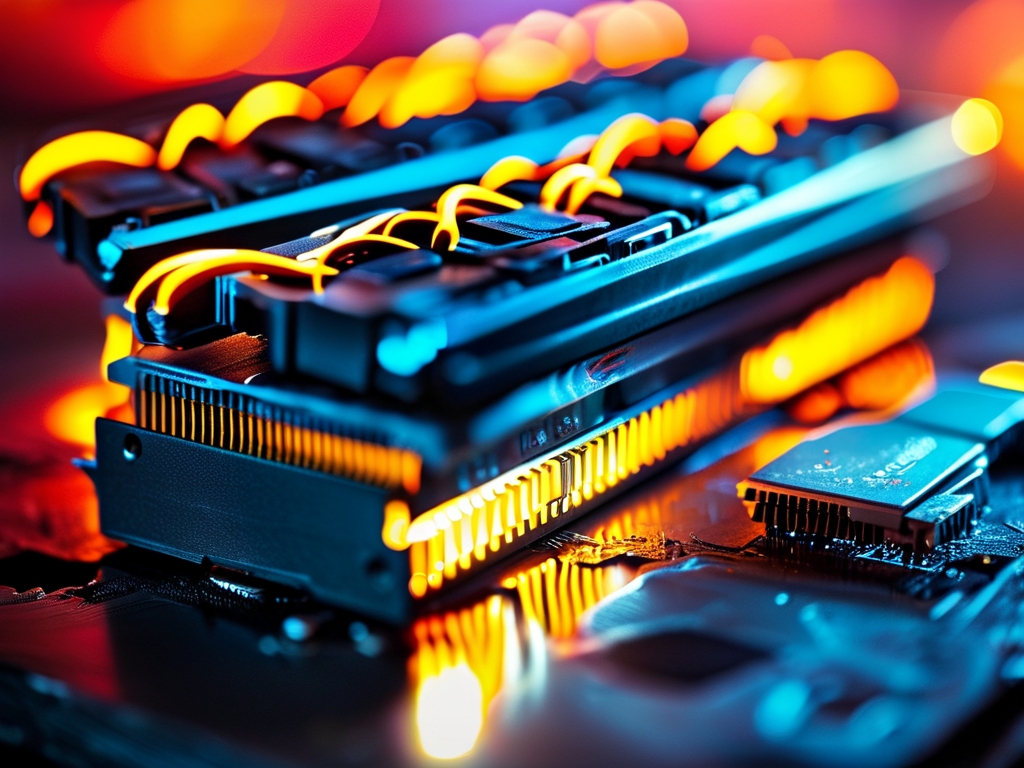In the world of computer hardware, understanding how memory modules (RAM) operate is critical for optimizing system performance. Two of the most discussed yet often misunderstood aspects of RAM are timings and frequency. This article will demystify how these metrics are calculated, their relationship to performance, and how to interpret them when selecting memory modules.

1. The Basics of RAM Frequency
RAM frequency, measured in megahertz (MHz), represents how many data cycles the memory can complete per second. For example, a DDR4-3200 module operates at a base frequency of 1,600 MHz, but due to its Double Data Rate (DDR) design, it performs two data transfers per clock cycle, resulting in an effective frequency of 3,200 MT/s (Mega Transfers per second).
How Frequency Is Calculated:
- The base clock speed is determined by the memory controller and motherboard compatibility.
- Effective frequency = Base clock × 2 (for DDR technology).
- Higher frequency allows more data to be transferred per second, directly impacting bandwidth.
Bandwidth can be calculated using the formula:
Bandwidth (GB/s) = (Effective Frequency × Bus Width) / 8
For a DDR4-3200 module with a 64-bit bus:
(3,200 MT/s × 64 bits) / 8 = 25.6 GB/s.
2. Decoding Memory Timings
Memory timings, expressed as a sequence of numbers (e.g., CL16-18-18-36), define the latency between specific operations. These values are measured in clock cycles and include:
- CAS Latency (CL): Delay between a read command and data availability.
- tRCD (RAS to CAS Delay): Time to activate a row and access a column.
- tRP (Row Precharge Time): Time to close a row and open a new one.
- tRAS (Active to Precharge Delay): Minimum time a row must remain active.
How Latency Is Calculated:
Actual latency (in nanoseconds) depends on both timings and frequency:
Latency (ns) = (CL × 2000) / Effective Frequency
For a DDR4-3200 CL16 module:
(16 × 2000) / 3200 = 10 ns.
Lower timings reduce latency but often require slower frequencies to maintain stability. This creates a trade-off between speed (frequency) and responsiveness (timings).
3. The Frequency vs. Timings Trade-Off
A common dilemma is whether to prioritize higher frequency or tighter timings. For example:
- A DDR4-3600 CL18 module has a latency of (18 × 2000)/3600 = 10 ns.
- A DDR4-3200 CL16 module also has 10 ns latency.
Despite the same latency, the 3600 MHz module offers higher bandwidth, making it better for tasks like video editing. Meanwhile, the 3200 CL16 module may perform equally well in latency-sensitive applications like gaming.
4. Overclocking and XMP Profiles
Modern RAM modules use XMP (Extreme Memory Profile) to simplify configuration. XMP stores pre-tested combinations of frequency and timings, allowing users to overclock without manual tuning. However, stability depends on factors like:
- Motherboard capabilities
- CPU memory controller quality
- Voltage adjustments (e.g., increasing from 1.2V to 1.35V for DDR4 overclocking).
5. Real-World Implications
- Gaming: Lower latency (CL14/CL16) improves frame-time consistency.
- Content Creation: Higher bandwidth (e.g., DDR5-6000) accelerates rendering.
- General Use: Mid-range kits (e.g., DDR4-3200 CL16) offer balanced performance.
6. Future Trends: DDR5 and Beyond
DDR5 memory introduces higher base frequencies (e.g., 4800 MHz) and improved power efficiency. However, its timings are initially looser (e.g., CL40), offsetting some latency gains. As DDR5 matures, tighter timings will likely bridge this gap.
Calculating RAM performance involves balancing frequency and timings based on workload requirements. While frequency dictates bandwidth, timings determine responsiveness. By understanding these metrics, users can make informed decisions when upgrading or building systems, ensuring optimal performance for their specific needs.

